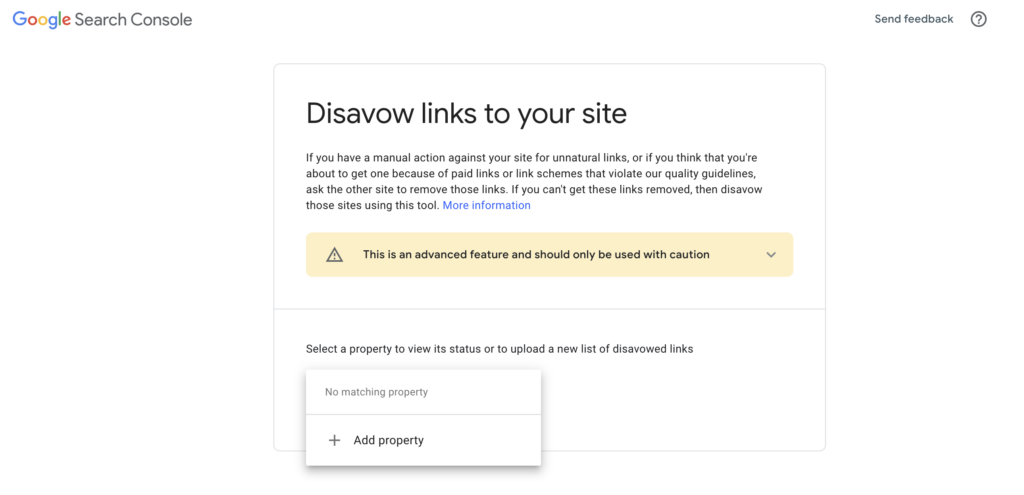11 Common Traits of Spammy Websites: Avoid Them & Google Penalties

When you buy something through one of the links on our site, we may earn an affiliate commission.
Search engines are more particular now than ever before about what they will rank at the top of the SERPs. Gone are the days when a long list of backlinks ensured that you would appear in the top spot. There's a good chance it may even hurt you if most of your links are from spammy websites.
What is a spammy website, and how can you spot one?
Spammy websites are those that promise an answer to your question but provide little real or useful information for the reader. Oftentimes, their pages are filled with links pointing to other websites, and they usually suffer from a major case of keyword stuffing.
If you want to know how to spot low-quality links on these spam pages, here's what you need to know.
Contents
Telltale Signs of Spammy Websites
The first thing you need to do to ensure that spam links aren't pointing back to your page is to spot which pages could be indexed as spam. Here are six key signs that search engines might categorize a website as spam.
1. High Spam Score and Low Domain Authority from Moz

If you're concerned about spammy links pointing back to your site from a particular page, you can run the site through a spam score tool. Moz has one of the most well-known tools around. It ranks sites on a score of 1 to 100, with higher numbers indicating more spam.
One of the best functions of their Link Explorer tool is that it also shows if you have a spammy link from another website pointing to your domain. Get a clearer picture of where your links are coming from so that you can make a wise decision about disavowing links (more on this in a minute).
Of course, you might also want to consider domain authority in addition to your spam score. Similar to a spam score, domain authority is ranked on a scale of 1 to 100, with higher numbers indicating a greater likelihood of ranking on Google. Spammy websites typically score very low on domain authority.
Learn more about domain authority and how to rank in Google here.
2. Alternative TLDs
When you're looking for a credible website, you should start by examining the name of the page. Sites with good reputations typically have the TLDs you've come to expect, namely .com, .org, and even the country-specific TLDs.
Oftentimes, you will find that a spammy link comes from alternative TLDs that are less expensive to purchase and have lower competition. Look for some of these spammy TLDs as a quick way to see whether the sites you're surfacing on are reputable:
- .ga
- .rn
- .cl
- .biz
- .info
- .zip
- .review
3. Black Hat SEO Tactics

Perhaps the most obvious sign that a website is nothing more than link spam is the presence of black-hat SEO tactics. Google Search Console takes note of sites that don't do things the right way, and they won't hesitate to punish sites that give in to black hat tactics like keyword stuffing.
While keyword stuffing may be the most common, other black hat tactics that can hurt search engine rankings include:
- Paid links back to your website
- Offering free products in exchange for links
- Low-quality content
- Duplicate content
- Negative SEO.
4. Lack of Concentration on a Niche
Spammy sites are often far-reaching and don't focus on any one area or niche. This is typically one of the more obvious signs that it's filled with nothing but spammy backlinks. For example, they might have a blog post today about jewelry and another tomorrow about home appliances.
In other words, they never take the time to build up authority and expertise in any niche.
Chances are that you took the time to get your audience to know, like, and trust you with your own website. Don't ruin that reputation by letting such links point back to your site when they don't have the right audience or expertise to help your search results.
5. Excess Advertisements

How do spammy sites generate revenue? There must be something keeping them in business if they don't have the audience that a true authority or niche site might have. They likely don't have a robust affiliate program, but they may have something just as good: advertising.
If they somehow get their spammy link to show up in the search engine rankings, they can get more eyes on their page and their advertisements.
Have you ever stumbled across a page that was littered with advertisements that had little to no focus? It disrupted your experience of the page and may have been a sign you were victim to a spammy link. Going to a page with tons of ads doesn't require top-notch SEO tools to help you identify spammy links like these.
6. Issues with Broken Links and Not Found Pages
Click some of the outgoing links on a spammy website, and you'll likely find that they direct you nowhere at all. Because there are so many low-quality links on these pages, they can't keep up with the ever-changing landscape of links. Broken links or those pointing to not-found pages seriously damage the user experience of a site.
This typically leads to 404 errors in the Google Search Console, but you may not need to worry too much about them. These don't usually lead to a decrease in your domain authority, search engine optimization, or rankings.
Instead, it reflects on the low-quality websites that list the broken links.
Google Spam Policy: What Else Can Hurt Your Search Engine Rankings?
If you want to know how the search engine will handle spam links from other websites, Google is pretty clear on what they consider spam. Sites that have any of these spammy tactics will likely be penalized.
7. Cloaking

Have you ever gone to one website because it seems to have the answer to your problem, only to get a totally different experience when you click on it? You may have been the victim of cloaking, which means that a site can manipulate search rankings.
Here's an example of how it works:
- A spammy website realizes that high-end bridal jewelry is a great niche with lots of searchable traffic.
- They don't sell high-end bridal jewelry and instead sell discount drugs or something else unsavory.
- The spammy site tells the Google search engine that its page is about bridal jewelry while showing drug information to users.
8. Doorways
Doorways are another tactic spammy sites might defer to, but they will be penalized as website spam if caught by Google. Using this tactic, a website owner might want to funnel all traffic to a specific page (which may contain all the spammy links).
For example, Google considers your website as using doorways if you have:
- Multiple websites with similar URLs
- Multiple domain names that all lead to a single functioning page
- Extra pages that direct users to a single page
- Very similar pages that are designed for website traffic instead of a hierarchy of pages.
9. Hacked Content

You may not know it unless you spend some time doing a thorough site search, but hacked content can ping in the search results. If a hacker adds code, pages, or content to your vulnerable website, organic traffic may start to drop off as Google penalizes you.
Another example of hacked content is redirects. When your website shows up in the SERPs, and an end-user clicks on it, hackers can redirect that click to a spammy website.
You may never realize that this is a spam link because it doesn't appear when you go directly to a URL.
This is the result of malware included on a vulnerable website, which is used to manipulate rankings and help spammy sites to gain more traffic. To identify this type of malware, you can inspect the code or try to search for your site on Google.
10. Hidden Texts and Links
Web pages categorized as spam are likely to have lots of hidden text and links. This means that they may have links hidden in the body of a website with words the same color as the background so that users can't easily identify what they're clicking on. Google also specifies that hidden text can look like:
- Text behind images
- Text off-screen using CSS
- Font size set to zero
- Linking individual characters instead of a whole word or phrase.
11. Link Spam
Link spam is one of the most well-known ways that you could be penalized in the search results. A linking site might be categorized as spam if they engage in tactics like:
- Buying and selling outgoing links pointing back to a website
- Offering a link for link exchange
- Free products in exchange for links
- Automatically-generated links
- Lack of directory listings
- Low-quality links in widgets.
Do Spammy Links Hurt Your SEO?

With all of this talk about how low-quality websites with spammy links are penalized in the search engines, you might be wondering: will these spammy links hurt your own SEO efforts?
The good news is that the answer is mostly no.
Google continuously refines what they identify as spammy links pointing back to a specific page. As a result of their refinement, the search engines are usually fairly adept at pinpointing when a site relies on spammy links.
They aren't likely to look at this spammy link as detrimental to your site.
Almost all websites have some low-quality links that could be categorized as spam links. It might be a near-impossible feat to disavow all of them, and Google understands that. It was a major component of their Penguin update.
If you feel that these spammy websites still might be harming your traffic, you can disavow them in the next step. To add to that, here is a guide on great ways to get high-quality backlinks instead of these spammy links.
How to Disavow Backlinks From Spammy Websites

Sometimes, website owners find that they are guilty of creating spammy links before they realize it would impact their search rankings. One of the most common scenarios here is paid links pointing back to your site. You can disavow these links rather than try to get them removed.
Keep in mind that you may need to disavow your spammy links if you find yourself facing a manual action from Google. Otherwise, you may be fine to keep these links pointing back to your site.
Here is what you need to do to disavow links:
- Find the spammy links you want to disavow: Use a URL or domain to disavow, written in a .txt file.
- Go to the disavow links tool: Choose a property to work with on the tool (part of Google Search Console).
- Upload your list: Review the list and upload a new one if there are errors.
- Wait for results: If your disavow file is successful, it can still take weeks for the search engines to process that list as they crawl the web looking for more spammy links.
Final Thoughts: Are You Seeing Signs of Spammy Websites?
Manipulating search rankings is the territory of low-quality websites. If you're going to focus your efforts on building links, you need to pay attention to where your organic traffic is coming from. A thorough link audit should be done on Google Search Console to pinpoint bad or unnatural links.
You can stop bad links from leading to a manual action on Google search results by quickly disavowing them, though this isn't always necessary.
As a site owner, you need to ensure that the user experience is the best it can be. Spammy websites should be kept to a minimum, and you should never give into the link schemes listed here to build up your own traffic!
Want to learn step-by-step how I built my Niche Site Empire up to a full-time income?
Yes! I Love to Learn
Learn How I Built My Niche Site Empire to a Full-time Income
- How to Pick the Right Keywords at the START, and avoid the losers
- How to Scale and Outsource 90% of the Work, Allowing Your Empire to GROW Without You
- How to Build a Site That Gets REAL TRAFFIC FROM GOOGLE (every. single. day.)
- Subscribe to the Niche Pursuits Newsletter delivered with value 3X per week
My top recommendations
















